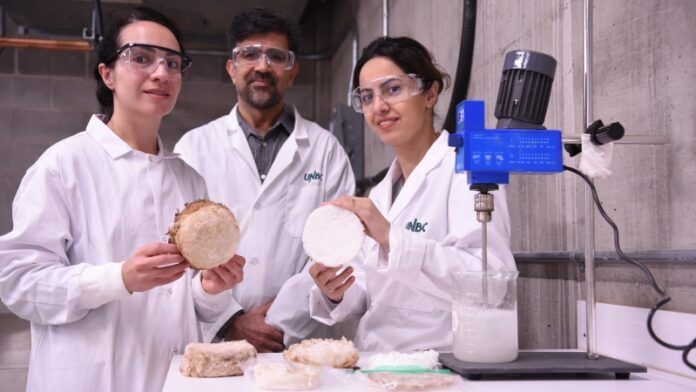A team of researchers at UNBC is working on new ways to package and ship seafood.
“Globally, there are close to hundreds of millions of boxes annually used for farm fishing, and close to the same number for wild seafoods,” said Dr. Hossein Kazemian, head of Northern Analytical Laboratory Services at UNBC.
“The thing that they are using right now for packaging, is Styrofoam expanded polystyrene, which is not ecofriendly, it’s not biodegradable.”
A team of researchers, led by Kazemian, in partnership with Brown’s Bay Packaging Company, is developing a new find of foam required to keep seafood fresh, but with a significantly smaller environmental footprint.
They recently received a $300,000 Ignite grant from Innovate BC to continue their research.
“We ended up with two solutions, one is a short-term solution that we are going to replace the styrofoam packaging or boxes with a hybrid box, which is made from cardboard and starch-foam, which is water resistant,” Kazemian explained.
Kazemian said replacing the styrofoam packaging for fish presents a challenge because two things are needed: structural stability and thermal insulation.
“When we did all of the feasibility study in the first six to eight months of the project, we noticed there are some solutions out there, but most of them are not mature enough to hit the market,” he explained.
“Starch foam is already there, so we can really build companies that are making them, but one of the problems is that they are not water-resistant, so they can provide the thermal insulation that we need, but they cannot provide the physical stability and water resistance we need.”
According to Kazemian, the company wanted to do the replacement as soon as possible, so they decided on the hybrid combination.
“That’s the main innovation in the first stage of this project, which is our short-term, our mid-term solution,” he explained.
“We are very close, hopefully next year, or less than a year, we think the first product is going to be out of our pilot plant.”
Kazemian said using a starch-based foam is only being used temporarily, because the starch is a food source, which could otherwise be used for food.
The team is still looking at other options, including wood-based materials.
“Given the fact we are in the fibre-basket of Canada in Northern BC, and we have lots of wood and forest, this can be one of the cheapest or least expensive source of raw materials,” Kazemian explained.
“This is not a food source, and can get renewed anyway, so we can use that to develop the new bio-polymer based on wood-cellulose.”
Kazemian added the polymer they are developing can be used for other purposes, such as insulation.
Something going on in the Prince George area you think people should know about?
Send us a news tip by emailing [email protected].






